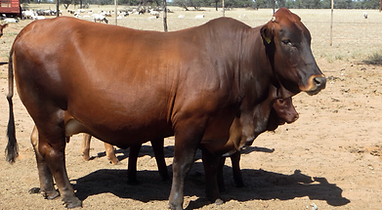
Key Results
-
From 1993 to 2013, the stocking rate increased continuously from 3.2 kg/ha to 12 kg/ha (200 cattle, 120 sheep, 100 goats), before the 2013-2019 drought period began.
-
The stocking rate decreased to 5 kg/ha during the 2013-2019 drought period. However, the core goat and cattle herds survived this seven-year drought (the worst since 1930) and are recovering fast. Herd building is underway. In all previous extended droughts, the stocking rate decreased to zero and a restart was necessary.
-
Bare patches have started to close over and perennial grasses (Bloubuff el and Anthephora spp.) are returning.
-
Since 2000, a natural die-back of several encroaching woody species is occurring, including Acacia refi ciens, Terminalia prun- ioides and Dichrostachys cinerea; however, Colophospermum mopane appears to remain unaff ected.
during the day and kraaling them every night. Calves are kraaled for four months every night. -
Predator issues have been addressed by herding small stock
Farm Adrianople

Paul Kotzé looks at high density, selective grazing from a diff erent perspective. To produce high profi ts, he uses high density to maintain a low biodiversity based on annual grass. His approach is not based on promoting perennial grass at all.

Ecological and financial resilience during and after the 2019 drought. Destocking of
the core sheep herds occurred in the 2019 drought and 2050 small stock units were
maintained.





